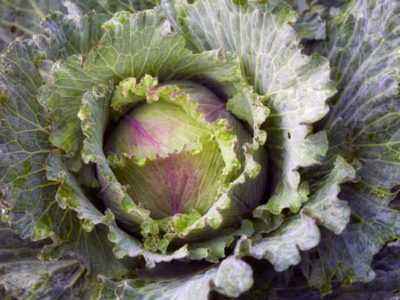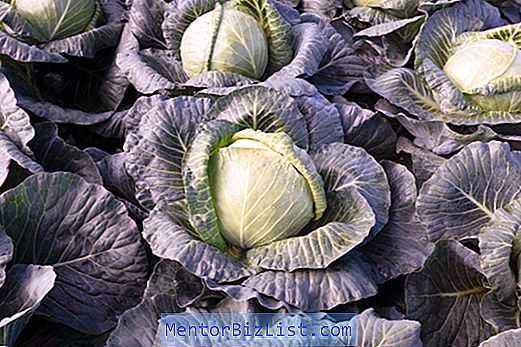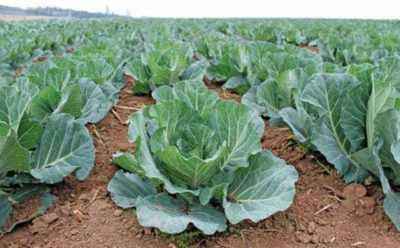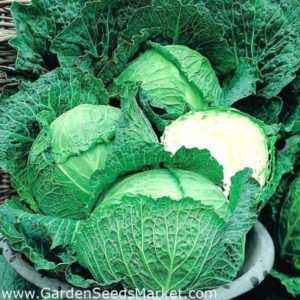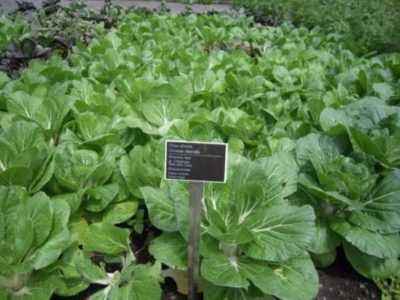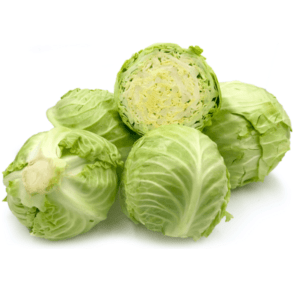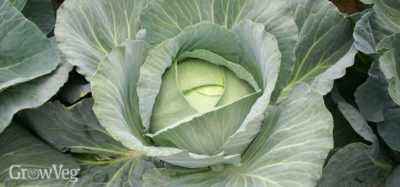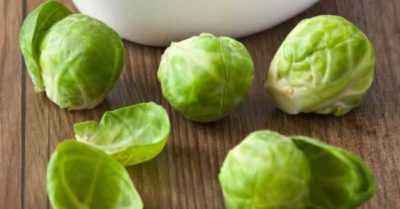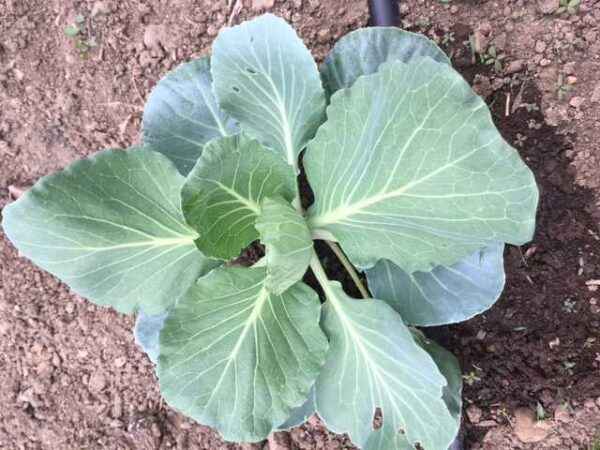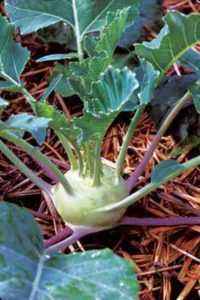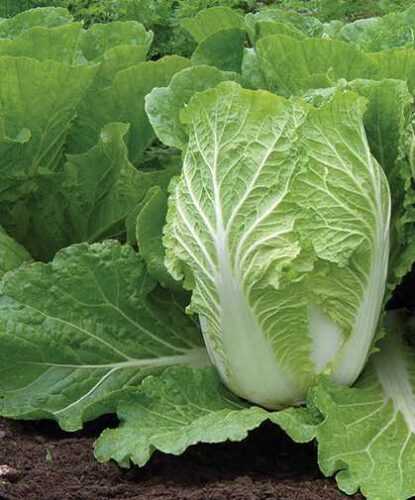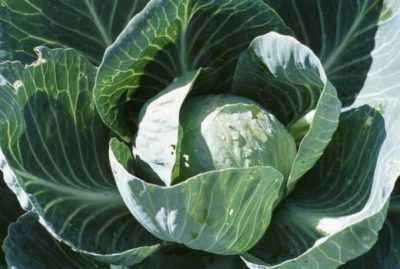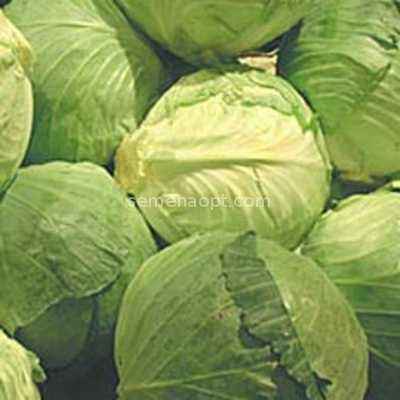Beijing cabbage contains a lot of vitamins, minerals and fiber, it has few calories, it has a delicate taste. Other names for this healthy vegetable are petsai, nappa, pao, Chinese, celery and lettuce. Peking cabbage in open ground pleases gardeners with early maturity and ease of maintenance.
- Site Selection
- Planting
- Care <
- Insects and pests
- Methods of control
- Diseases and treatment
- Conclusion <

Cultivation of Chinese cabbage in open ground
Site selection
For proper development and good yields, fertile soil with a high content of readily available organic substances is required. Light to medium loamy soil with good it is permeable and has a minimum clay content.The high growth rate is favored by light marshy (peat) or super sandy soils with a deep moisture-intensive arable layer.
In acidic soils, lime fertilizers (calcite, dolomite, limestone, slaked lime) are introduced in the fall, to stimulate plant growth and reduce the risk of peronosporosis.
Poor sandy soils are not suitable for planting Chinese cabbage on them. They quickly warm up and do not form a crust after moisturizing, rapidly losing moisture reserves. Saline soils are characterized by difficult outflow of surface and subsoil waters, which also makes them unsuitable for growing crops by seed or seedlings.
The culture cannot be planted after cruciferous, beets and tomatoes, which have common diseases and pests. It is better to grow after green fertilizers, garlic, onions, pumpkin, potatoes, legumes or grains.
Planting
It is necessary to dig the soil, add organic fertilizer to it (bucket for 1 sq. m) and harrow.
It is necessary to plant Beijing cabbage in the ground, based on the growing method:
- Seedless (seed) method. Sowing begins in the first decade of May after warming up the soil. If the goal is to harvest in the fall, then the seeds are sown in the early to mid-July. It is necessary to grow salad culture according to the scheme 20 × 30, with the formation of a head of cabbage – 35 × 35 or 50 × 50 cm. Sowing of seeds is carried out at the rate of 2 g per 5 square meters. m.
- Seedling method. Seedlings are planted in the first ten days of May according to the 30 × 50 pattern. At least 3 weeks must pass from the moment of emergence of the seedlings to form 4-5 true leaves. Before transplanting, plants need abundant watering. It is better to initially grow seedlings in individual containers so that when planting in open ground not to damage the delicate root system.
Care

Provide the plants with good care
Care rules:
- Maintenance optimal temperature.The ideal temperature for growing in open ground is 16 ° C-19 ° C during the day, 8 ° C-10 ° C at night. Humidity should be 70-80%, soil – 60-65%.
- Shelter with agrofiber or other light non-woven material immediately after landing. The shelter pursues several goals at once: protecting against sharp fluctuations in temperature, the scorching rays of the sun, cruciferous fleas and stimulating the rapid formation of heads of cabbage.
- Mulching (surface covering of the soil) with straw or peat 12-16 days after planting.
- Delicate loosening of soil around the crop and weeding of weed grass. You should be careful not to accidentally damage the covering leaves of the vegetable during weeding.
- Abundant watering of the plant under the root. It is carried out once a week: early in the morning or late in the evening. During a drought, optimal sprinkling is ideal (drip irrigation). It is important to prevent stagnation of water, otherwise the root system will rot.
- Fertilization. In open ground, Beijing cabbage needs the introduction of organic fertilizers 12-16 days after planting. In the future, for the best growth and development of petsaya complex fertilizers are applied. A crop planted in spring is fertilized 3 times during the growing season, planted in summer – 2 times. Chinese cabbage is genetically predisposed to the accumulation of nitrates, so it is necessary to strictly limit the amount of nitrate fertilizers applied.
Insects and pests
To grow petsai in a country house or garden, take into account the risk of infection or insect invasion and the ability to correctly and timely take measures to improve plants.
The threat to the cultivation of Beijing cabbage in the open field is:
- caterpillars of turnip whitewash (female),
- slugs;
- cruciferous fleas.
It’s better to use traditional methods for fighting, rather than chemical insecticides.
Methods of struggle
Inspection and manual collection of eggs found k helps prevent the invasion of the female repressor and the destruction of cruciferous weeds (shepherd’s bag, colza, mustard) that attract butterflies. To combat them, sprinkling cabbage with strong coffee, a solution of ammonia or weak saline is used. To prevent damage to the culture by slugs, it is necessary to destroy weeds in a timely manner, remove garbage in the area (mollusks like to hide in it from the sun) and prevent dampness.
Sprinkle the earth around the plantings with sand, small pebbles or crushed eggshell so that the pests do not could creep up to the parsus.

Insects need to be disposed of
To protect crops from cruciferous fleas; you can plant tomatoes, onions or garlic between rows of Beijing cabbage (seeds or seedlings). Effective methods for controlling fleas are also:
- dry pollination of plantings with a mixture of ash and lime, wood ash and tobacco dust or ashes and ordinary dust;
- dry pollination of paths between rows of shoots of mothballs or tobacco dust;
- spraying with vegetable decoctions (garlic, leaves and roots of dandelion, wormwood, potato tops, etc.).
Diseases and treatment
In order to grow a healthy culture, you need to fight diseases that are provoked by improper care or climatic conditions.
З diseases of Beijing cabbage:
- black leg (rhizoctonia);
- fusarium wilt (tracheomycosis);
- dry rot (fomosis);
- downy mildew (peronosporosis);
- cruciferous keel;
- mosaic;
- black spotting (alternariosis);
- white rot (sclerotiniosis, watery soft rot);
- mucosal bacteriosis (wet bacterial rot).
An effective method of combating fungal diseases (rhizoctonia, peronosporosis, etc.) is the use fungicides (“Fundazol”, “Chorus”).
Viral damage (mosaic) is incurable and requires immediate removal of the affected plants.
The appearance of bacterial diseases in most cases is associated with weather conditions and improper care of the crop. These lesions are also incurable.
For the prevention of diseases of Beijing cabbage, it is necessary to treat with special chemicals at the stage when the gardener sows seeds or plants seedlings. An important role in the prevention of diseases is played by the absence of weeds in the planting area, quality planting stock and healthy soil.
Conclusion
It is easy to grow Beijing cabbage in the open field. The yield of a vegetable crop largely depends on whether the planting technology is followed, and proper care and prevention of diseases are ensured. .
Simple agricultural technology and early maturity make Beijing cabbage one of the most popular cruciferous species grown on their gardens and suburban areas. It is popular all over the world.
